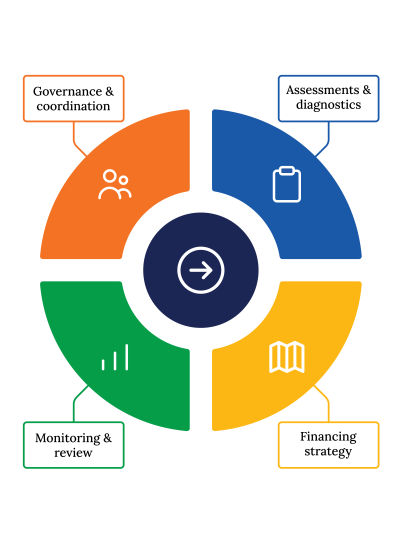Digital Financial Services
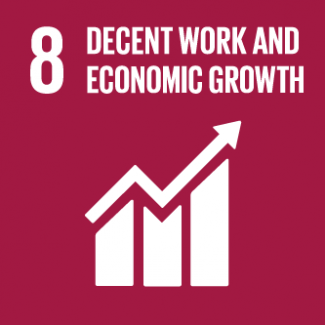
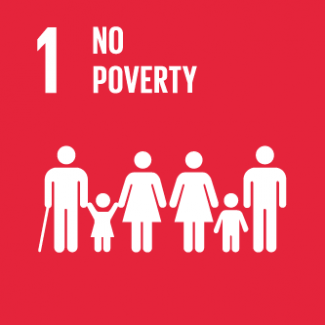
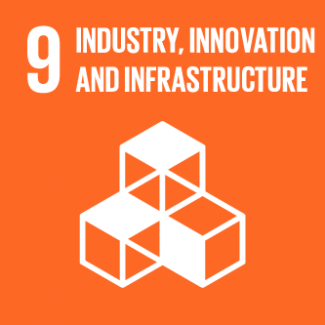
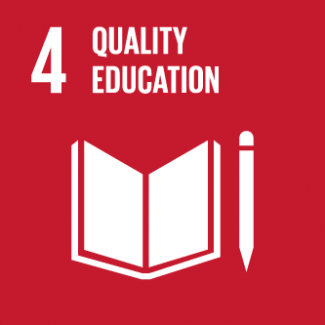
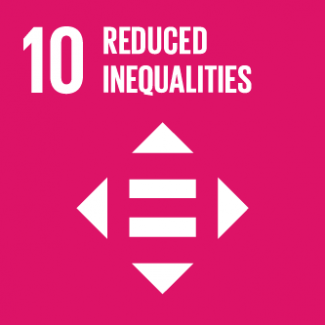
Business Model Description
Leveraging technology to provide accessible and efficient financial products and services. Includes mobile banking applications, digital wallets, peer-to-peer lending platforms, and online payment systems. By utilizing technology to streamline operations and reduce costs, financial institutions can expand their reach to underserved populations.
Expected Impact
Enhance financial inclusion by providing access to banking services for individuals who are traditionally unbanked or underbanked.
How is this information gathered?
Investment opportunities with potential to contribute to sustainable development are based on country-level SDG Investor Maps.
Disclaimer
UNDP, the Private Finance for the SDGs, and their affiliates (collectively “UNDP”) do not seek or solicit investment for programmes, projects, or opportunities described on this site (collectively “Programmes”) or any other Programmes, and nothing on this page should constitute a solicitation for investment. The actors listed on this site are not partners of UNDP, and their inclusion should not be construed as an endorsement or recommendation by UNDP for any relationship or investment.
The descriptions on this page are provided for informational purposes only. Only companies and enterprises that appear under the case study tab have been validated and vetted through UNDP programmes such as the Growth Stage Impact Ventures (GSIV), Business Call to Action (BCtA), or through other UN agencies. Even then, under no circumstances should their appearance on this website be construed as an endorsement for any relationship or investment. UNDP assumes no liability for investment losses directly or indirectly resulting from recommendations made, implied, or inferred by its research. Likewise, UNDP assumes no claim to investment gains directly or indirectly resulting from trading profits, investment management, or advisory fees obtained by following investment recommendations made, implied, or inferred by its research.
Investment involves risk, and all investments should be made with the supervision of a professional investment manager or advisor. The materials on the website are not an offer to sell or a solicitation of an offer to buy any investment, security, or commodity, nor shall any security be offered or sold to any person, in any jurisdiction in which such offer would be unlawful under the securities laws of such jurisdiction.
Country & Regions
Sector Classification
Financials
Development need
Jamaica's financial sector faces challenges in depth and inclusion, with limited access to credit for individuals and firms, particularly smaller enterprises and women-led businesses. Financial underdevelopment has constrained private sector growth, exacerbated by high public debt crowding out private credit.
Policy priority
The government prioritizes financial sector reforms to enhance stability, deepen access, and promote inclusion. Initiatives include increasing competition in banking, reforming financial taxation, and implementing digital trade capabilities. These align with broader goals of economic diversification, private sector-led growth, and resilience against external shocks.
Gender inequalities and marginalization issues
Women-led firms face disproportionate barriers in accessing finance, limiting their entrepreneurial potential. Marginalized groups in rural areas also struggle with physical access to banking services. Addressing these inequalities is crucial for inclusive economic development and reducing systemic disparities
Investment opportunities introduction
The corporate and retail banking subsector in Jamaica presents significant investment opportunities in expanding digital banking platforms and developing tailored financial products for SMEs, particularly women-led enterprises, to bridge the financial inclusion gap.
Key bottlenecks introduction
Challenges include limited physical access to financial services in rural areas, high costs of credit, inadequate competition in banking, and persistent informal employment. Structural inefficiencies and vulnerability to external shocks further hinder the sector's development potential
Corporate and Retail Banking
Development need
Corporate and retail banking addresses critical development challenges, including limited financial access for small businesses and individuals, particularly women-led enterprises. Despite reforms, access to credit remains a major obstacle, impacting entrepreneurship and economic growth. For example, private sector credit to GDP rose from 26% in 2010 to 56% in 2020.
Policy Priority
The Jamaican government prioritizes financial inclusion and deepening through regulatory reforms and development banking strategies. Policies aim to expand access to credit, improve financial literacy, and strengthen the banking sector's capacity to support economic growth. Initiatives include promoting equity markets and reducing collateral requirements for loans
Gender inequalities and marginalization issues
Women-led businesses face significant barriers in accessing finance, such as higher collateral requirements and unfavorable loan terms. Small enterprises also struggle with cost constraints and loan approval expectations.
Investment opportunities introduction
Challenges include high collateral requirements, limited financial literacy among marginalized groups, and the need for robust regulatory frameworks. Additionally, smaller firms face higher costs of financing, while development banks require structural reforms to effectively meet market demands.
Key bottlenecks introduction
Prior to 2018, there wasn't an enabling environment for access to pharmaceuticals and medical supplies at Drug Serv and partner pharmacies
Consumer Finance
Pipeline Opportunity
Digital Financial Services
Leveraging technology to provide accessible and efficient financial products and services. Includes mobile banking applications, digital wallets, peer-to-peer lending platforms, and online payment systems. By utilizing technology to streamline operations and reduce costs, financial institutions can expand their reach to underserved populations.
Business Case
Market Size and Environment
> USD 1 billion
Projected to reach a transaction value of $1.2 billion USD by 2025
Cross-Border Remittances: Digital remittances play a crucial role in Jamaica's economy, with platforms like JAM-DEX supporting secure and efficient cross-border payments. This segment contributes significantly to the overall transaction value forecast for the digital payments market.
With smartphone penetration reaching over 85% among Jamaicans and internet access expanding nationwide, there is significant potential for growth in mobile banking and fintech solutions. According to a report by ALNAP, digital financial inclusion has gained momentum in Jamaica, with various stakeholders working to enhance access to digital payment systems
E-Commerce and Mobile Payments Expansion: The rise in e-commerce and mobile point-of-sale (POS) payments has fueled demand for digital payment solutions. Consumer preference for contactless and secure payment methods has surged, particularly post-COVID-19, aligning with global trends in fintech adoption
Indicative Return
20% - 25%
> 25%
Market Trends: Jamaica ranks 72nd on the Network Readiness Index and 78th on the Global Innovation Index, reflecting steady progress in tech innovation. Increased spending on computer software and e-commerce legislation supports the digital finance ecosystem's profitability.
Projected Fintech Growth: The fintech sector in Jamaica is expected to yield high returns, driven by investments in digital payment solutions, blockchain technologies, and financial inclusion initiatives. These align with government priorities under Vision 2030, fostering economic growth and productivity
Investment Timeframe
Medium Term (5–10 years)
Medium-Term Debt Strategy: Jamaica's Medium-Term Debt Management Strategy (MTDS) spans FY2024/25 to FY2027/28, focusing on reducing foreign currency risk and expanding domestic debt markets. This aligns with a 5-10 year investment horizon to stabilize and grow the financial sector
Digital Transformation Initiatives: The National Financial Inclusion Strategy (NFIS) and the launch of JAM-DEX (Jamaica’s CBDC) are expected to drive digital payments adoption over the next 5-10 years, creating a mature digital finance ecosystem
Ticket Size
USD 1 million - USD 10 million
Market Risks & Scale Obstacles
Market - Highly Regulated
Capital - Limited Investor Interest
Cybersecurity Risks
Impact Case
Sustainable Development Need
Financial Inclusion: Despite improvements, access to finance remains a significant challenge for small businesses and women-led enterprises in Jamaica. Only 11% of households borrow from formal institutions, while 30% rely on informal channels, highlighting the need for accessible credit systems.
Access to Credit for MSMEs: Micro, small and medium-sized enterprises (SMEs) face severe challenges in obtaining credit, exacerbated by high collateral requirements and limited financial products tailored to their needs.
Cash-Heavy Economy: Cash remains the dominant transaction method, limiting structured savings and investment opportunities.
Gender & Marginalisation
Gender inequalities and marginalization issues: Persons living in rural areas are disproportionately excluded from formal financial systems due to limited infrastructure and digital literacy.
Expected Development Outcome
Increased Financial Inclusion:The IOA addresses the unbanked population by leveraging JAM-DEX and mobile wallets, enabling access to affordable financial services. This is expected to reduce financial exclusion and empower underserved communities
Enhanced Transparency and Accountability: Digital financial services improve traceability of transactions, including welfare payments, fostering greater accountability in government programs and reducing tax evasion
Gender & Marginalisation
Enhanced Economic Participation for Marginalized Groups: Digital financial services provide underserved populations, including rural communities and informal workers, with tools to participate in the economy, addressing systemic exclusion and fostering inclusive growth
Primary SDGs addressed

8.10.2 Proportion of adults (15 years and older) with an account at a bank or other financial institution or with a mobile-money-service provider
Access to financial services is improving, but 17% of Jamaicans remain unbanked, with rural populations and women disproportionately excluded
The goal is to increase financial inclusion to 95% by 2030, leveraging digital financial services like JAM-DEX and mobile banking to reach underserved populations.

1.4.1 Proportion of population living in households with access to basic services
Jamaica’s PATH program covers 40% of beneficiary families through electronic payments, indicating progress in social protection but gaps in universal coverage.
The target is to achieve universal coverage of social protection systems by 2030, ensuring all vulnerable groups, including children and the elderly, are supported.

9.3.2 Proportion of small-scale industries with a loan or line of credit
Small enterprises face barriers, with high collateral requirements and limited tailored financial products, hindering their growth and economic participation
Jamaica aims to ensure 80% of SMEs have access to financial services by 2030, fostering inclusive economic growth and entrepreneurship through tailored financial products.
Secondary SDGs addressed


Directly impacted stakeholders
People
Gender inequality and/or marginalization
Planet
Corporates
Public sector
Indirectly impacted stakeholders
People
Gender inequality and/or marginalization
Planet
Corporates
Public sector
Outcome Risks
Increased Cybersecurity Risks: The IOA’s reliance on digital platforms may expose users to cybercrimes, such as fraud and data breaches, undermining trust in digital financial services.
Overreliance on Digital Infrastructure: Frequent power outages and poor internet connectivity in rural areas could impede access to digital financial services, limiting their effectiveness.
Potential for Increased Debt Burden: Easy access to digital credit may lead to over-indebtedness among vulnerable populations, exacerbating financial instability.
Impact Risks
External Risk: Cybersecurity threats, such as hacking and fraud, could disrupt service delivery, erode trust, and limit the effectiveness of digital financial initiatives.
Stakeholder Participation Risk: Misaligned expectations or lack of engagement with marginalized communities, especially women and the elderly, could result in low adoption rates and exclusion.
Endurance Risk: Sustaining digital financial services requires ongoing investment in infrastructure and cybersecurity, which, if neglected, could lead to service degradation and loss of impact.
Impact Classification
What
Increased financial inclusion, reduced transaction costs, and enhanced transparency in financial services, positively impacting underserved populations and aligning with Vision 2030 goals.
Who
Unbanked individuals (17% of Jamaicans), entrepreneurs, rural communities, and SMEs, who face systemic barriers to accessing traditional financial services
Risk
Cybersecurity threats, exacerbation of gender inequality, and exclusion of tech-unsavvy populations, which could undermine the intended positive outcomes.
Impact Thesis
Enhance financial inclusion by providing access to banking services for individuals who are traditionally unbanked or underbanked.
Enabling Environment
Policy Environment
Vision 2030 Jamaica: This national development plan emphasizes financial inclusion as a key driver of economic growth, supporting the IOA’s mission to reduce poverty and inequality through digital finance.
National Financial Inclusion Strategy (NFIS): The NFIS outlines a roadmap for financial inclusion, focusing on access, resilience, and growth, aligning with the IOA’s goals to expand digital financial services and reach underserved populations.
National Cybersecurity Strategy Addresses growing cybercrime concerns, ensuring the security of digital financial systems and protecting users, which is critical for the IOA’s success.
ICT in Education Policy (2022): Integrates digital skills into education, building a tech-savvy workforce that can effectively adopt and utilize digital financial services
Financial Environment
Boosting Innovation, Growth, and Entrepreneurship Ecosystems (BIGEE) Programme : Provides support for digital businesses, including access to finance.
Credit Guarantee Scheme for MSMEs: Reduces lending risks for financial institutions, enabling increased access to credit for small businesses
Regulatory Environment
Electronic Transactions Act: This legislation provides the legal framework for electronic payments and digital signatures, enabling secure and efficient digital financial transactions.
Anti-Money Laundering (AML) and Counter-Terrorism Financing (CFT) Regulations: Balances financial inclusion with security, ensuring that the IOA’s digital financial services remain transparent and trustworthy.
Data Protection Act (DPA): Establishes a trust environment for the digital economy by safeguarding user data, a critical factor for the digital finance adoption and success.
BOJ Fintech Regulatory Sandbox: Allows fintech companies to test innovative products in a controlled environment, fostering innovation and enabling the IOA to develop and scale its solutions.
Marketplace Participants
Private Sector
Private sector: Mastercard, Visa, National Commercial Bank, JN Bank, Sagicor, FGB are actively pursuing fintech initiatives. Other banks, credit unions and financial institutions are adopting technology to enhance their service offerings. Fintech players include WEPAY, EZEEPAY and Legible (Live Harmony) and other emerging ventures
Government
Government: Bank of Jamaica (BOJ), Ministry of Industry, Investment, and Commerce, Development Bank of Jamaica (DBJ)
Multilaterals
Multilaterals: World Bank, European Union, United States Agency for International Development, Interamerican Development Bank, Caribbean Development Bank
Non-Profit
Non-Profit:Chambers of Commerce, PSOJ, SBAJ and the JEAMA. The Jamaica's Technology & Digital Alliance could also play an Important role
Public-Private Partnership
Public-Private Partnership: Fintech Regulatory Sandbox












